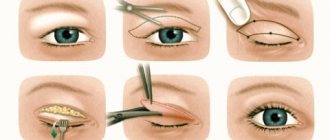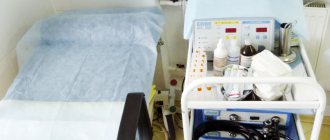Whipple disease (WD) is a rare chronic systemic disease caused by a known infectious agent, Tropheryma whipplei. The first description of BU appeared in 1907, when the American pathologist J. H. Whipple reported the results of a sectional study of a thirty-six-year-old patient who for 5 years complained of fever, joint pain, cough, diarrhea and weight loss [1-3]. During the pathological examination, the patient was found to have enlarged lymph nodes and polyserositis. Multiple lipid deposits and a large number of macrophages with argyrophilic rod-shaped structures were detected in the intestinal wall and lymph nodes. The author put forward two assumptions about the etiology of the disease: infectious and lipid metabolism disorder (as the most likely cause). He also proposed the term “intestinal lipodystrophy.” As an additional finding, in 1949, B. Black-Schaffer found PAS-positive macrophages containing glycoprotein or mucopolysaccharides in biopsies of lymph nodes and small intestine from patients with BU [1, 4]. In 1961, J. Gardley and T. Hendrix, using electron microscopy, identified rod-shaped bodies in the cytoplasm of macrophages, and in 1992, using molecular sequencing, they were able to identify the pathogen (Tropheryma whipplei) [5, 6].
Tropheryma whipplei is a widespread commensal that rarely causes disease [1, 2, 5–7]. Up to 7% of people are healthy carriers with positive stool polymerase chain reaction (PCR) tests [8]. It is believed that infection occurs through the fecal-oral route (mainly in early childhood) and occurs without symptoms or in one of the primary forms - gastroenteritis, bacteremia or pneumonia [1]. Long-term asymptomatic carriage can last several decades and can develop into local chronic forms or lead to a generalization of the process with classic symptoms of BU [1, 8].
The immunological defect is associated with human leukocyte antigen (HLA)-B27, since the occurrence of this antigen among patients with BU is higher than in the general population [2, 3, 6], but a direct causal relationship between the presence of HLA-B27 and infectious susceptibility is not demonstrated [6].
The epidemiology of BU is limited by small sample sizes. The estimated incidence is 0.5–1:1,000,000. Men are affected 3–5 times more often than women, and the peak incidence occurs at the age of 50–60 years [1, 8, 9]. BU is more common among Caucasians, but isolated cases of the disease have been described in Spaniards, Indians, as well as representatives of the Negroid and Mongoloid races. Among the sick, residents of rural areas predominate, more often agricultural workers. Family cases of the disease have also been described [1, 8, 10].
The clinical manifestations of BU are varied due to the multisystem nature of the lesion. BU is characterized by a gradual onset and chronic course. There are three stages of the disease. The first stage, as a rule, is manifested by polyarthritis, lymphadenopathy, increased body temperature, sometimes with chills and heavy sweating. In the second stage, diarrhea and malabsorption syndrome appear with weight loss and metabolic disorders. The third stage of BU is characterized by cachexia and symptoms of damage to the central nervous system, respiratory system, heart, and eyes [3, 11]. In foreign literature, only two stages of BU are distinguished: prodromal and steady-state stage [6].
At the first stage, as noted earlier, extraintestinal manifestations occur with polyarthritis, lymphadenopathy and fever, sometimes with chills and profuse sweating [11]. Articular syndrome in BU is the earliest manifestation and in almost 75% of cases the only one before the full clinical picture; characterized by paroxysmal migrating oligo- or polyarthritis (less often monoarthritis). The duration of the first stage of BU varies widely: from 1.5 to 6.7–7 years [1, 8]. At the same time, in some patients, BU may manifest itself with symptoms of tracheobronchitis [3].
During the second stage (the period of a detailed clinical picture), gastrointestinal manifestations occur with abdominal pain, diarrhea (up to 5-10 times a day), steatorrhea and malabsorption syndrome, leading to polyhypovitaminosis and metabolic disorders. In this case, damage to the joints and bronchi becomes less significant for the patient [1, 11, 12].
At the third stage, cachexia, lymphadenopathy, polyserositis, symptoms of damage to the respiratory system, heart, central nervous system, eyes and skin may develop [1, 3, 11, 13, 14].
Respiratory involvement may manifest as hydrothorax, pneumonitis, or granulomatous mediastinal lymphadenopathy. In BU, inflammation can affect any lining of the heart, but more often endocarditis develops with the absence of previous valvular damage, normothermia and negative blood culture. The most common lesions of the central nervous system are dementia, supranuclear ophthalmoplegia and myoclonus. Uveitis is the most common ocular lesion in BU, but diffuse chorioretinitis, glaucoma, or keratitis may develop [1, 11–13, 15, 16].
At the time of diagnosis, the majority (85%) of patients present with diarrhea secondary to arthralgia, malabsorption syndrome, weight loss, lymphadenopathy, fever and sweating [12, 17].
Due to its rare occurrence and varied clinical presentation with a variety of symptoms and clinical manifestations, misdiagnosis and delay in diagnosis of BU are common. Patients can be examined by various specialists [18], most often gastroenterologists, rheumatologists, neurologists or cardiologists [11, 15, 19–21]. The average time to correct diagnosis varies from 22 to 72 months, depending on the nature of the symptoms present [5].
Decisive in the diagnosis of BU is histological examination of the small intestine, which reveals large PAS-positive macrophages with foamy cytoplasm in the lamina propria of the small intestine mucosa [9]. Histological examination is the reference standard for diagnosing classic BU; the second most important method for diagnosing BU is PCR [5].
The most specific diagnostic sign of the manifestation of BU is damage to the mucous membrane of the duodenum, therefore, a biopsy of the mucous membrane is required for the purpose of pathomorphological confirmation of the diagnosis [3, 6, 22].
Endoscopic examination of the upper gastrointestinal tract in patients with BU reveals pale pink mucosa of the duodenum and/or jejunum with diffuse lymphangiectasia. When using high-resolution endoscopy and narrow-spectrum modes, it can be determined that the villi are swollen, club-shaped, thickened at the ends, with whitish inclusions [6].
At the same time, the sensitivity of the PAS reaction of small intestinal biopsies depends on the invasion and ranges from 71% for the neurological variant of manifestations to 78% for the intestinal variant [11, 14]. But in some patients, the mucous membrane of the small intestine may be intact, so it is necessary to examine biopsies from other locations [8]. In addition to the small intestine, PAS-positive macrophages are detected in many other organs and tissues, including lymph nodes and synovial fluid. PAS-positive substances are breakdown products of phagocytosed bacteria, and their presence was previously considered a sign exclusively of BU. Today it is known that a positive PAS reaction can occur with damage to M. avium-intracellulare (in HIV-infected patients), corynebacteriosis, histoplasmosis, mycoses, and sarcoidosis [1].
Early diagnosis of BU makes it possible to begin appropriate treatment and improve the prognosis of the disease, and long-term antibiotic therapy leads to remission [8], while without treatment, BU is fatal [6]. Death can occur 1-2 years after the onset of intestinal symptoms [3].
More often, treatment begins with a parenteral course of bactericidal antibiotics with good penetration into the cerebrospinal fluid for a period of 14 days. Long-term (1-2 years) maintenance treatment is carried out with co-trimoxazole. But recently, an increase in the resistance of Tropheryma whipplei to co-trimoxazole has been noted. An alternative regimen includes a combination of doxycycline with hydroxychloroquine, with the addition of high doses of sulfadiazine in the presence of neurological symptoms. The use of glucocorticoids (prednisolone 30-40 mg/day with a gradual dose reduction until complete withdrawal) is of auxiliary value. If necessary, correction of the consequences of malabsorption syndrome (metabolic disorders, water-electrolyte balance, iron deficiency, hypovitaminosis, etc.) is carried out [1, 3, 8].
Treatment is monitored by repeated morphological studies of small intestinal biopsies or by PCR [1]. Despite the attenuation of clinical symptoms and endoscopic manifestations of BU during treatment, the accumulation of macrophages in the lamina propria of the small intestinal mucosa may persist [6].
Thus, BU is a rare pathology in the routine practice of doctors of many clinical specialties; the decisive role in the final diagnosis largely belongs to endoscopists.
We present our clinical observation.
Clinical observation
A 48-year-old man, a shepherd, a village resident, was admitted to the hematology department with complaints of constant pain in the abdomen and right side, partially relieved by taking nimesulide, weight loss of 10 kg per year, shortness of breath with minimal physical activity, and severe general weakness.
According to the patient, abdominal pain has been bothering him for more than a year. Previously, he sought medical help at his place of residence. During the examination, a gastric ulcer was revealed; multislice computed tomography of the abdominal cavity and retroperitoneal space revealed signs of grade 1-2 steatohepatosis. Hepatomegaly. Severe abdominal lymphadenopathy. Video colonoscopy reveals total diverticulosis of the colon. Additionally, cervical lymphadenopathy was detected, and according to the results of an excisional biopsy of the cervical lymph node, a structural disorder was revealed due to extensive foci of macrophage infiltration with the presence of multinucleated cells and cystic dilation of the lumen of the lymphatic vessels.
During the period of observation and examination in a hospital at the place of residence, abdominal pain syndrome persisted against the background of constant use of non-steroidal anti-inflammatory drugs (nimesulide).
To clarify the diagnosis, he was hospitalized in the hematology department of the State Budgetary Healthcare Institution NSO "GNOKB".
From the anamnesis. Operations - appendectomy more than 20 years ago. Concussion twice. Epidemiological history: there was no contact with infectious patients. Denies sexually transmitted diseases, tuberculosis, viral hepatitis. Heredity is burdened with diabetes mellitus (brother). My father died of lip cancer. Bad habits: previously abused alcohol, has not drunk alcohol or smoked for 10 years. There is no allergic history. There were no blood transfusions.
The results of laboratory tests revealed normocytic hypochromic anemia, accelerated ESR, increased levels of C-reactive protein, and hypoproteinemia (probably due to hypoalbuminemia). All results are presented in the table .
Table. Laboratory data on admission (clinical observation)
| Index | Reference values | results |
| General blood analysis | ||
| Hemoglobin, g/l ↓ | 130,0—165,0 | 83,00 |
| Hematocrit, % ↓ | 36—50 | 26,90 |
| Average erythrocyte volume, fl ↓ | 78—99 | 69,50 |
| Average hemoglobin concentration, pg ↓ | 32—36 | 21,40 |
| Red blood cells, 1012/l | 3,90—5,60 | 3,87 |
| Leukocytes, ·109/l] | 4,0—9,0 | 8,20 |
| Blood chemistry | ||
| AST, mU/l | 0—50,00 | 20,20 |
| AlAT, mU/l | 0—50,00 | 9,60 |
| GGT, mU/l | 0—55,00 | 31,70 |
| Total protein, g/l ↓ | 66,00—83,00 | 59,30 |
| Albumin, g/l ↓ | 35,00—52,00 | 34,10 |
| C-reactive protein, mg/l ↑↑ | 0—5,0 | 68,80 |
| Urea, mol/l | 2,80—7,20 | 4,60 |
Note. AST—aspartate aminotransferase; ALT—alanine aminotransferase; GGT - gamma-glutamyltransferase.
Objective research data. The general condition is moderate. ECOG 3 points. Consciousness is clear. The physique is normosthenic. Body temperature 36.6°C. Body weight 61 kg. Height 163 cm. The skin is pale and clean. Visible mucous membranes are pink and clean. Subcutaneous tissue is poorly expressed. Cervical, supraclavicular, inguinal, axillary lymphadenopathy with enlarged lymph nodes up to 1.5 cm was detected. The thyroid gland is of normal size. The osteoarticular system without visible pathology. The muscular system is developed satisfactorily. Breathing frequency 17/1 min. There is no shortness of breath. Nasal breathing is free. The tonsils are not hypertrophied. The chest is of the correct shape. Percussion above the lungs is a pulmonary sound with a box-like tint. Auscultation - vesicular breathing, no wheezing. Pulse 62 beats per minute, good filling and tension. Blood pressure 120/80 mm Hg. on both hands. Apical impulse in the fifth intercostal space on the left. Percussion borders of the heart are within normal limits. Auscultation - heart sounds are sonorous, rhythmic. There are no pathological noises. The tongue is moist and clean. The stomach is involved in the act of breathing. Palpation in the mesogastric region reveals a moderately painful large formation measuring approximately 15x20 cm. There are no peritoneal symptoms. The liver protrudes 3 cm from under the edge of the costal arch. Dimensions according to Kurlov: 15×11×9 cm. Intestinal motility is normal. Bowel sounds can be heard clearly. The stool is regular and formed. The spleen is not clearly palpable, percussion dimensions: longitudinal - 12 cm, transverse - 8 cm. Urination is free, the kidneys are not palpable. Pasternatsky's symptom is negative on both sides. Secondary sexual characteristics are developed according to sex and age. Breast glands without visible pathology. There is no peripheral edema. There are no varicose veins.
A computed tomography scan of the chest revealed signs of a single idiopathic lesion in S6 of the right lung (probably an intrapulmonary lymph node?), chronic bronchitis, and atherosclerosis.
The result of esophagogastroduodenoscopy: the esophagus without pathology. The rosette of the cardia is 40 cm from the incisors, corresponds to the level of the diaphragm, is symmetrical, completely closed, and freely passable for the endoscope. The Z-line is blurred, located 1 cm above the proximal edge of the cardia folds. When stressed, prolapse of the gastric mucosa into the lumen of the esophagus is noted. The gastric mucosa in all sections is smooth, moderately focally hyperemic (erythema), the surface structure and vascular pattern are regular . The pylorus has a regular rounded shape, closes, and is freely passable for the endoscope. No other gastric pathology was identified. The duodenal bulb is capacious, of normal shape, not deformed, freely passable for an endoscope, the mucous membrane is typically velvety, whitish, with coatings of millet or rice grains located tightly to each other, a biopsy of two fragments. Postbulbar part of the duodenum: the lumen of the descending part of the intestine expands well with air insufflation, normal diameter, the relief of the folds is not disturbed, the mucous membrane has whitish inclusions that almost completely cover the surface. The major duodenal papilla is not visualized. Conclusion: signs of cardia failure. Erythematous (focal) gastropathy. Duodenogastric reflux. Diffuse lymphangiectasia of the duodenal mucosa (Fig. 1a-1d) .
Rice. 1. Clinical observation. Endophoto.
a, b - duodenal bulb, the mucous membrane is velvety, with coatings of millet or rice grains located tightly to each other; c, d - jejunum, the mucous membrane is velvety, with coatings of millet or rice grains located tightly to each other.
Pathomorphological study of biopsy samples of the duodenal mucosa from December 9, 2019: chronic inflammation of low activity with unevenly expressed infiltration of lymphocytes and eosinophils. Flattening and rounding of the villi with expansion of the lamina propria of the mucous membrane due to pronounced infiltration of foamy and weakly eosinophilic infiltrates and expansion of lymphatic vessels (Fig. 2a) . When stained with PAS, macrophages with a pronounced PAS-positive reaction (Fig. 2b) . The morphological picture most closely matches the BU.
Rice. 2. Clinical observation.
a — light optical microscopy of the duodenum (staining with hematoxylin and eosin, magnification ×10), the villi of the duodenum are flattened and rounded, the lamina propria of the mucous membrane is expanded due to diffuse infiltration of macrophages with paretic expansion of lymphatic capillaries and fatty deposits; b — PAS staining of fragments of the duodenum, PAS-positive macrophages with rod-shaped bacterial inclusions; c — light optical microscopy of the lymph node of the neck (staining with hematoxylin and eosin, UV × 10), the structure of the lymph node is disturbed due to a lipogranulomatous reaction with focal-diffuse infiltration of macrophages with the presence of multinucleated cells and cystic dilatation of the lymphatic ducts; d — when stained for PAS, PAS-positive macrophages with rod-shaped bacterial inclusions; e — light optical microscopy of the abdominal lymph node (staining with hematoxylin and eosin, ×10 magnification), the structure of the lymph node is disturbed due to a lipogranulomatous reaction with focal-diffuse infiltration of macrophages with the presence of multinucleated cells and cystic dilatation of the lymphatic ducts; e — PAS staining of fragments: PAS-positive macrophages with rod-shaped bacterial inclusions.
The result of trepanobiopsy of the iliac wing dated 12/09/19: bone beams with signs of resorption, bone marrow cavities of various volumes. The ratio of fat and cellular bone marrow is from 50:50 to 30:70%. Three-line hematopoiesis - erythroid and granulation lineages are generally expanded, presented with intermediate forms. The erythroid sprout is scattered. Megakaryocytes up to 10 per field of view, single and multinucleated of various sizes. At the light-optical level, no signs of lymphoproliferative tumor disease were detected.
Ultrasound examination of the abdominal organs and kidneys revealed diffuse changes in the liver and pancreas.
The result of a pathomorphological examination of the neck lymph node dated December 11, 2019: the structure is disrupted due to extensive foci of macrophage infiltration, the presence of multinucleated cells with cystic dilatation of the lumen of the lymphatic vessels. The morphological picture corresponds to the damage to the lymph nodes in BU (Fig. 2c, 2d) .
Laparoscopy was performed on December 23, 2019. Intraoperatively, enlarged, hyperemic lymph nodes with a diameter of up to 1.0 cm were found at the root of the mesentery of the small intestine. A biopsy of the lymph nodes of the abdominal cavity was performed. During a pathomorphological examination of the lymph node (December 23, 2019), it was concluded that the morphological picture corresponds to damage to the lymph nodes in BU (Fig. 2e, 2f) .
In accordance with the established diagnosis, the patient was prescribed treatment: sulfasalazine 4 g (2 months) and co-trimoxazole 1 g (2 weeks), observation by a gastroenterologist at the place of residence.
On a repeat visit to the clinic (February 2022), positive dynamics were noted, expressed in the absence of complaints and improvement in well-being. Repeated endoscopic examination revealed positive dynamics, expressed in regression of changes in the mucous membrane of the duodenum (Fig. 3a, 3b) . According to the pathomorphological examination (Fig. 4a, 4b), there is a slight positive dynamics with persistent macrophage infiltration of the lamina propria by macrophages with foamy cytoplasm, with paretic expansion of the lymphatic ducts. The patient's observation continues.
Rice. 3. Clinical observation. Endophoto.
a, b — duodenal bulb, positive dynamics, expressed in a decrease in the severity of changes.
Rice. 4. Clinical observation. Light optical microscopy of the duodenum.
Compared to the previous study, diffuse widespread macrophage infiltration of the lamina propria with macrophages with foamy cytoplasm and paretic dilatation of the lymphatic ducts remained (staining with hematoxylin and eosin, a - magnification ×20, b - magnification ×10).
1.General information
The history of the discovery and study of this disease is inextricably linked with the name of the American pathologist and specialist in biomedicine, Nobel laureate George H. Whipple, who in 1907 first described strange lipid (fatty) granulomas in the small intestine, which he occasionally discovered during pathological studies.
The term “intestinal lipodystrophy” was introduced by him, and he himself refuted the hypothesis about the degenerative-dystrophic pathogenesis of the disease. However, the name remained, and later the diagnosis “lipophagic intestinal granulomatosis” was also proposed, but the term “Whipple’s disease” is most often used, and with good reason.
In general, it took about a hundred years before answers were found to the main questions that had long remained unclear regarding Whipple's disease. Let us again emphasize that the directions of the search were unmistakably outlined by the discoverer himself: J. Whipple considered the definition of “intestinal” (intestinal) incomplete and spoke about the multisystem nature of the disease (which was later confirmed), and then isolated a previously unknown microorganism in the affected intestine, similar to the causative agent of syphilis (pale spirochete).
Whipple's disease occurs, or rather, is conclusively diagnosed, very rarely: to date, only a little more than a hundred reliable observations have been accumulated (the real prevalence of the disease may be much higher). There have been cases of manifestation and recognition of the disease in childhood, but the majority of patients are men 30-50 years old. Some sources even indicate that women do not get sick at all, but this is not true: the sex ratio in accumulated statistics is 8:1 or, according to other sources, 9:1 in favor of men, that is, there is indeed a significant predominance - but not absolute gender dependence.
A must read! Help with treatment and hospitalization!
Symptoms
Despite the fact that Whipple's disease is infectious in nature, there is currently no exact data regarding the duration of the incubation period.
First clinical manifestations:
- a sharp increase in temperature to 38 degrees and above;
- muscle and joint pain;
- severe chills;
- swelling and redness of the skin over the affected joint;
- enlargement of the lymph nodes - their mobility is maintained, and no pain occurs during palpation.
Intestinal or intestinal symptoms gradually begin to develop:
- disorder of the act of defecation, which is expressed in profuse diarrhea - the frequency of the urge to empty the bowel can reach 10 times a day;
- foamy consistency of feces and their light brown color - in some cases, feces acquire a tar-like consistency, which indicates a blood clotting disorder or the development of internal hemorrhages;
- progressive loss of body weight;
- cramping pain localized in the navel area and often occurring after eating food;
- nausea, occasionally leading to vomiting;
- aversion to food;
- swelling and inflammatory lesions of the tongue;
- increase in abdominal size;
- increased gas formation;
- fast fatiguability.
Changes in the skin are observed:
- the appearance of areas of hyperpigmentation;
- dryness and flaking of the skin;
- subcutaneous hemorrhages;
- thickening of the skin.
Involvement of the lungs in the pathological process is indicated by:
- severe cough with sputum production;
- pain in the chest area;
- persistent decrease in blood tone values;
- dyspnea;
- slight increase in temperature.
Symptoms of Whipple's disease
Damage to the nervous system is expressed in the following disorders:
- dementia;
- seizures;
- paralysis of the upper or lower limbs;
- speech function disorder;
- sleep disorders;
- depression;
- memory loss.
In some cases, the organs of vision are affected:
- night or night blindness;
- inflammatory damage to the membranes of the eyes;
- darkening of the skin around the eyes.
Clinical manifestations develop in both adults and children. It must be remembered that the severity of symptoms in a child can be much higher than in middle-aged or older people.
2. Reasons
The period of scientific debate regarding the nature of Whipple's disease dragged on for many decades. For a long time, the metabolic hypothesis was dominant, according to which the disease is one of the variants of lipid (fat) metabolism disorders. However, traces of an immune reaction to an unknown pathogen were later confirmed (1949), and then, in 1991-1992, two independent researchers (R. Wilson, D. Rillman) using the polymerase chain reaction method identified a gram-positive actinobacterium, originally named - again , in honor of George Whipple, - Tropheryma whippelii. In 2001, this name, which is still used in the vast majority of domestic publications, was recognized as spelling incorrect and changed to Tropheryma whipplei.
Thus, Whipple's disease is an infectious disease. The pathogenic activity of the pathogen is found not only in the intestines, but also in many other organs and tissues, for example, in the lymphatic system, joints, etc.
It should be noted that the pathogenesis still remains not entirely clear. Researchers are paying attention to the sex ratio (see above), which is characteristic of many inherited diseases, and continue to search for genetic aberrations that may be responsible for the immune system "breakdown" in relation to Tropheryma whipplei.
Visit our Gastroenterology page
Classification
As Whipple's disease progresses, it goes through several stages, which gradually develop one after another:
- Stage 1 - extraintestinal symptoms appear. Often only one system is affected, such as the joints or lymph nodes. The main symptom is a constantly elevated body temperature.
- Stage 2 - there is a development of disturbances in the digestive processes and the occurrence of consequences associated with this, for example, stool upset and a sharp decrease in body weight.
- Stage 3 - involvement of various internal organs in the pathology is noted, which may include the heart, lungs, and nervous system.
The disease has only a chronic course.
3. Symptoms and diagnosis
Most authors distinguish three stages (phases) in the course of Whipple's disease: extraintestinal, intestinal and systemic. However, years may pass from the appearance of prodromal signs - dysfunction of one or another organ outside the gastrointestinal tract (kidneys, skin, eyes, etc.), weight loss, low blood pressure, joint inflammation, etc. - to classical intestinal symptoms, which makes diagnosis extremely difficult.
In typical cases, the intestinal, advanced stage of Whipple's disease is caused by malabsorption syndrome - impaired absorption and incomplete absorption of nutrients in the small intestine: chronic diarrhea, steatorrhea ("fatty" feces), weight loss, fever, hypovitaminosis and other associated symptoms.
At the third, multisystem stage, neurological, cardiovascular, polyserositic symptoms are added (in the absence of etiopathogenetic treatment, severe, progressive and ultimately fatal).
Diagnosis is based on a thorough study of the clinic and the dynamics of the condition, however, only a histological analysis of the biopsy sample (characteristic multiple fat deposits) is necessary and sufficient confirmation. Whipple's disease, especially if such suspicion arises in the early stages, should be clearly differentiated from rheumatoid arthritis, hypocorticism, etc.
About our clinic Chistye Prudy metro station Medintercom page!
Discussion
BU is a rare multisystem inflammatory disease of infectious etiology. The variability of the clinical picture makes the diagnosis of BU difficult. The average time until a correct diagnosis is made is 22–48 months, depending on the nature of the symptoms present [5]. We were able to diagnose BU just 12 months after the patient first sought medical help.
Among people suffering from BU, the majority are Caucasian men, middle-aged, employed in agriculture [1, 8-10], which is confirmed by our observation.
Gastrointestinal manifestations are considered the classic symptoms of the disease [11, 12]. In our observation, intestinal manifestations were represented by moderately intense abdominal pain, and malabsorption syndrome - weight loss of 10 kg over 1 year and hypoproteinemia with hypoalbuminemia in combination with iron deficiency anemia. In addition, based on laboratory examinations, an acceleration of ESR and an increase in the level of C-reactive protein were revealed. Thus, no specific changes in laboratory parameters were observed, which coincides with literature data [1].
Intestinal symptoms in BU develop at the second stage of the disease [11], which is preceded by a long stage of extraintestinal manifestations, lasting up to 7 years. Extraintestinal manifestations of BU are varied: articular syndrome, lymphadenopathy, fever with profuse sweating, or tracheobronchitis [1, 11]. It is the articular syndrome that most often precedes intestinal manifestations, but it was absent in our patient. The main extraintestinal manifestation of BU in the case we presented was lymphadenopathy, due to which the patient was hospitalized in the hospital. A computed tomography scan of the chest organs revealed signs of tracheobronchitis in the patient, the symptoms of which could also manifest as bronchitis [3], but at the time of seeking medical help the patient did not present any characteristic complaints. This can be explained by the fact that during the transition to the second phase of the disease, symptoms of damage to the joints and bronchi become less significant for the patient [11, 12].
In the presented case, BU was confirmed by morphological examination of biopsy samples of the mucous membrane of the duodenum, cervical and intra-abdominal lymph nodes.
Changes pathognomonic for BU were identified. In biopsy samples of the mucous membrane of the lymph nodes of both localizations, they are represented by extensive foci of macrophage infiltration with the presence of multinucleated cells and cystic dilatation of the lumen of lymphatic vessels, and in preparations obtained from the duodenum - chronic inflammation of low activity with unevenly expressed infiltration of PAS-positive macrophages, flattening and rounding of villi with expansion of the lamina propria due to pronounced infiltration of foamy and weakly eosinophilic infiltrates with expansion of lymphatic vessels. This confirms the literature data on the possibility of using biopsy samples from various locations to diagnose BU, especially in cases of negative biopsy of the duodenal mucosa [1, 8]. Intermediate treatment results were assessed by esophagogastroduodenoscopy followed by morphological examination of biopsy samples of the duodenal mucosa. At the same time, endoscopic signs of disease remission were noted against the background of preservation of histological changes, which is also emphasized by some authors, although today it is difficult to assess their prognostic value regarding the likelihood of disease relapse during treatment [6]. This circumstance is, on the one hand, an indication for continued therapy; on the other hand, it demonstrates the discrepancy between the endoscopic and histological manifestations of BU. It is possible that histological manifestations anticipate the development of endoscopic symptoms, therefore, if BU is suspected, a biopsy of the mucous membrane from the duodenum is necessary even in the absence of macroscopic manifestations of the mucous membrane, which was also demonstrated in our clinical case.
4.Treatment
Before the invention and introduction of antibiotics, patients with Whipple's disease had virtually no chance of effective treatment: the outcome of progression of multisystem damage was always fatal. Currently, a wide selection of powerful antibacterial and anti-inflammatory drugs, correctors of metabolic processes, and vitamin complexes are available, the competent and controlled use of which interrupts the development of the disease. However, a number of specialists assess the prognosis more cautiously and restrainedly: relapses with unpredictable dynamics are possible. Nevertheless, Whipple's disease is no longer incurable.
Prevention and prognosis
To reduce the likelihood of developing the disease, people should follow a few simple rules. Prevention recommendations include:
- complete renunciation of addictions;
- balanced diet;
- constant strengthening of the immune system;
- comprehensive elimination of gastroenterological and any other chronic pathologies that can provoke the development of Whipple’s disease;
- Regularly undergoing a full examination at a medical institution.
The symptoms and treatment of Whipple's disease affect the prognosis, which is considered conditionally favorable. This is due to the fact that it is impossible to completely cure the disease, however, compliance with therapeutic rules can help achieve long-term remission.
It is worth noting that without qualified help, people die several years after the onset of intestinal clinical manifestations. Complications can lead to death.
What does histology show?
Histological examination allows us to establish characteristic damage to the intestinal mucosa in its own layer. It consists in shortening and thickening of the villi in the small intestine, changing their shape, and infiltrating the mucous membrane with large macrophages.
In the cytoplasm of macrophages during the disease, a significant amount of granules of glycoproteins that are related to a certain color (called PAS-positive) was found. The appearance of the cells is described as “foamy”. This sign is considered the main (pathognomonic) in diagnosis.
Other cellular elements of the intestine are unchanged in appearance, but significantly reduced in number, since they are replaced by macrophages. The intestinal wall is filled with wide capillaries and lymphatic ducts with fatty inclusions.
Accumulations of fats are also observed on the outside of the cells. The surface layer of the intestinal epithelium may have areas with nonspecific changes, but is practically not affected.
Electron microscopy has made it possible to identify bacilli-like bodies in the intestinal lining in Whipple's disease. They are most concentrated in areas around blood vessels. They are also found in macrophages, rarely in leukocytes, plasma and endothelial cells.
Read also: Constipation in children aged 5 years
Prices
| Disease | Approximate price, $ |
| Prices for examinations for stomach cancer | 5 730 |
| Prices for diagnosing Crohn's disease | 3 560 — 4 120 |
| Prices for diagnosing gastrointestinal cancer | 4 700 — 6 200 |
| Prices for hepatitis C diagnostics | 5 700 — 6 300 |
| Prices for treatment of Vater's nipple cancer | 81 600 — 84 620 |
| Prices for colorectal cancer treatment | 66 990 — 75 790 |
| Prices for treatment of pancreatic cancer | 53 890 — 72 590 |
| Prices for treatment of esophageal cancer | 61 010 — 81 010 |
| Prices for treatment of gallbladder cancer | 7 920 — 26 820 |
| Prices for treatment of nonspecific ulcerative colitis | 5 670 |
| Prices for treatment of stomach cancer | 58 820 |
| Prices for diagnosis and treatment of gallstone disease | 9 000 — 11 950 |
| Prices for the treatment of gastroenterological diseases | 4 990 — 8 490 |
| Prices for diagnosing Crohn's disease | 5 730 — 9 590 |
| Prices for treatment of viral hepatitis C and B | 5 380 — 7 580 |
| Prices for treatment of gastrointestinal cancer | 4 700 — 6 200 |
Diagnosis of the disease
Not every specialist remembers Whipple's disease. However, it can be suspected based on the consistently unfolding clinical picture. To fully confirm a rare diagnosis, diagnostic procedures will be required:
- hemogram (detects anemia, elevation of platelets and leukocytes, acceleration of ESR);
- biochemical tests (detect a decrease in protein, cholesterol, iron, potassium, magnesium, calcium in the blood);
- stool examination (high fat content is observed);
- endoscopic procedures: enteroscopy, fibroduodenoscopy, jeunoscopy or fibroileocolonoscopy (can find redness and swelling of the small intestinal mucosa, light yellow raised formations allow you to take the necessary biopsies);
- X-ray examination with contrast - barium (passage of barium through the examined small intestine can detect changes in the relief of the mucous membrane, indirect signs of enlarged lymph nodes);
- Ultrasound, MRI/CT - visualize enlarged lymph nodes, accumulation of excess fluid in the cavities;
- histological examination of the obtained biopsy specimens - pieces of small intestinal mucosa, tissue samples of lymph nodes and affected organs - the main method for identifying Whipple's disease (characterized by the presence of altered “foamy” macrophages with or without bacilli, fat accumulations in the mucosa, lymphatic tract and nodes);
- molecular genetic method (PCR).











